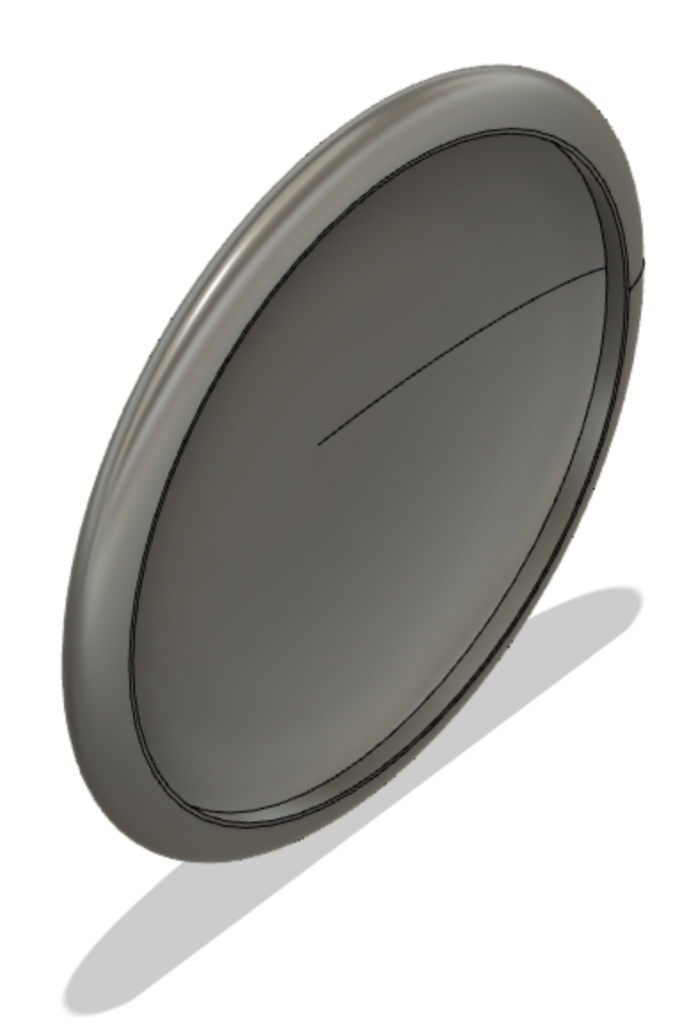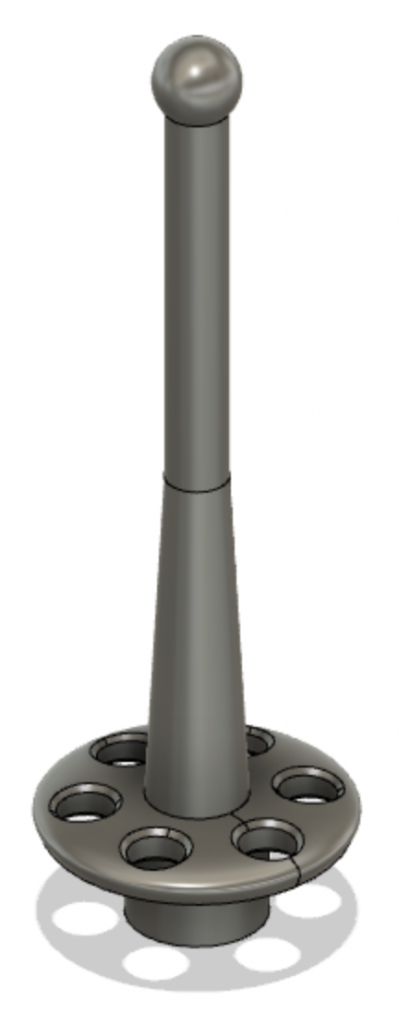The SDG standards apply to the equipment, as opposed to the rules which apply to players and courses.
The standards are designed to keep the game as small and fun as possible without creating much of a hazard. In addition, the discs are intentionally small and lightweight so they are less likely to break things or cause injury. Please don’t take that as a challenge.
The standards are also designed to keep the game as realistic as possible by requiring hand skill, judgment and disc selection. Different throwers will have different advantages and disadvantages and different discs will behave differently when thrown. Learning the equipment is part of being a better player, regardless of the size of the discs. Unlike regular disc golf, one need not be particularly strong or even coordinated to succeed in Small Disc Golf.
Finally, the standards are meant to create a fair game that is fun to play and easy to understand for anyone who already plays or understands disc golf and throwing discs. For everyone else the standards help ensure that skills learned will transfer to playing with others. Practice yields practical benefits even on unfamiliar courses.
Standards also enable competition. These standards leave open many different avenues for innovation in the shapes of discs, the style of throwers and the design of targets so that competition may introduce never-before-seen obstacles, mandatories and targets to help keep the game fresh and interesting.
Disc Standards

A SDG disc is limited to these dimensions and has the following restrictions:
- Between 70 and 80mm in diameter (inclusive)
- Between 5 and 15 mm thick
- A disc may weigh no more than 20 grams
SDG discs can have characteristics that normal disc golf discs may not have. For example:
- A bottom skin
- Holes in skin(s)
- Ridiculous or unusual profiles
- Disc that are not radially symmetric
This is meant to make the game more fun by allowing creative exploration of possible disc designs. Ultimately someone will experiment and discover the next amazing disc design that ends up in the hands of professional disc golfers because of a novel capability that comes with that shape. If anyone can design discs then someone will have a stroke of genius and disc golf will be better for it. Of course, it is up to the PDGA to set standards for actual golf discs and many novel SDG discs could never be used in a PDGA tournament if scaled up to an appropriate size and made with appropriate materials.
There is a page dedicated to Small Disc Golf Modeling and design and another page dedicated to 3D-printing SDG discs.
Target Standards

Players attempt to “hit” targets, which can be almost anything that complies with the standards below. A scale model of a traditional disc golf target would of course be acceptable. But, Small Disc Golf also allows many other kinds of targets. Some examples include:
- A dot drawn on the playing surface. The shot is considered made if the dot is completely hidden underneath the disc.
- A bell attached to the playing surface. The shot is made when the sound of the bell is heard.
- A circle or other shape drawn on the playing surface or a piece of paper that has been attached to the surface. Typically touching is sufficient.
- A pot or tray
- A platform on the play surface such as a coffee table book or a coffee table.
- A vertical target that topples over when hit (a 3D printable “topple target” is included in the 3D models page).
- A scale model of a traditional chain-type disc golf pole hole, which ultimately someone will design and print and that will be awesome!
The “standards” below are not specific about the kind of target because ultimately it is up to the players to agree on what is an acceptable target and what constitutes “hitting it”.
- Targets must unambiguously indicate whether a shot was made or not (such as being inside something, knocking something over, covering something or making a sound.)
- It should not be necessary to see the target being hit to know after the fact whether it has been “hit”
- The target must be able to be restored after it has been hit so that it is effectively unchanged for the next player to use.
- If a target can be knocked out of place when it is hit, there must be a way to ensure it is put back in the same place. For example, draw a line around the base of the target, or place an adhesive dot where the center of the target is located, or use intersecting lines and alignment windows like the topple target has.
There is a page of examples that include different kinds of targets you can make or use based on items you might have where you live or are playing small disc golf.
There is also a page with a 3D-printable target called a Topple Target.
Course and Hole Standards
In regular disc golf, circle one has a 10 meter radius. Circle two has a radius of 20 meters. The equivalents for Small Disc Golf are as follows:
Circle One: 2 meters
Circle Two: 4 meters
A hole must have a tee and a target, beyond that it is up to the course designer to select where these are to be placed and what mandatories or course rules apply to each hole.
As long as a tee is unambiguous it may be used. The disc can be released from over any point over the tee area, so the shape of the tee matters to players, but any shape is acceptable.
There aren’t a lots of standards for holes beyond what is above to leave open the possibility of having many different kinds of holes that take advantage of the unique possibilities each space provides.
